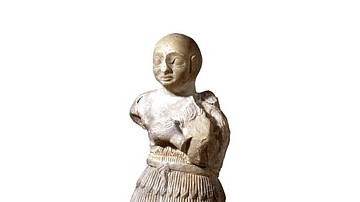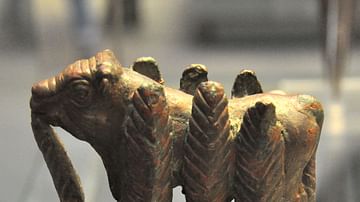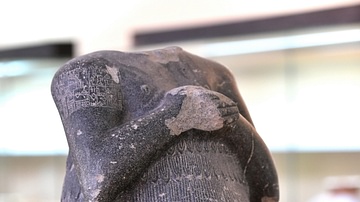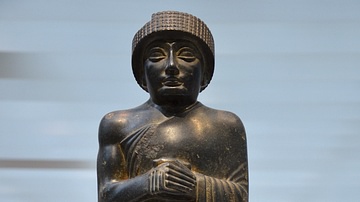Search
Remove Ads
Advertisement
Search Results

Definition
Early Dynastic Period (Mesopotamia)
The Early Dynastic Period of Mesopotamia is the modern-day archaeological term for the era in Mesopotamian history – 2900-2334 BCE – during which some of the most significant cultural advances were made including the rise of the cities, the...

Definition
Nanshe
Nanshe (also known as Nanse, Nazi) is the Sumerian goddess of social justice and divination, whose popularity eventually transcended her original boundaries of southern Mesopotamia toward all points throughout the region in the 3rd millennium...

Image
Headless Statue of Entemena of Lagash
This black diorite statue depictes Entemena, a king (or ruler) of Lagash, around 2400 BCE; identified by the cuneiform inscriptions on the right shoulder and back. The king wears the typical flounced Sumerian skirt. The statue was found in...

Image
Obelisk of Ur-Nanshe from Lagash
This large white limestone obelisk was found in Lagash, southern Mesopotamia, in modern-day Iraq. All of the 4 aspects of the obelisk were carved, in reliefs, with different scenes. The frontal surface depicts the Sumerian goddess Nisaba...

Definition
Mesopotamian Warfare
Ancient Mesopotamian warfare progressed from companies of a city's militia in Sumer to the professional standing armies of Akkad, Babylon, Assyria, and Persia and from conflicts over land or water rights to wars of conquest and political...

Image
Dolerite Statue of Gudea, ruler of Lagash
Dolerite statue of Gudea, ruler of Lagash. Upper part of standing figure with head; carved and polished mottled green dolerite; but neck restored; represents Gudea, king of Lagash. It is possible that the head and body were not originally...

Image
Stone Pebble of Prince Eannatum of Lagash
A variety of pebbles, clay tablets, and plaques were found at the ancient city of Lagash and girsu. The cuneiform inscriptions mention on them the name of Eannatum, prince and ruler of Lagash. The narration usually states that he was given...

Image
Votive Mace Head from Lagash
This mace head was inscribed with a cuneiform text. The text says that the mace is dedicated to the god Kindazi by the lady Ninkagina, both on her own behalf and that of Nam-mahani, who was a king of Lagash. The mace head itself has a name...

Image
Gudea of Lagash
Seating diorite statue of Gudea, prince of Lagash, dedicated to the god Ningishzida, excavated in Telloh (ancient Girsu), Iraq, dating to the Neo-Sumerian period, c. 2120 BCE.
Louvre, Paris.

Image
Gudea, Prince of Lagash
Diorite statue of Gudea, prince of the state of Lagash in Southern Mesopotamia who ruled c. 2144–2124 BCE. From Girsu (Irak), around 2120 BCE. Louvre Lens, France.